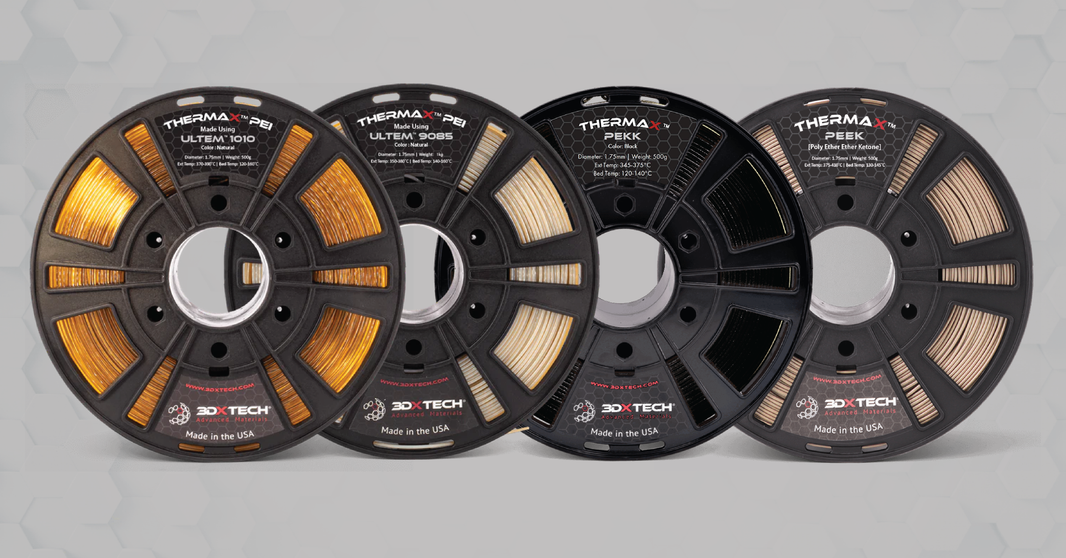ESD-Safe 3D Printing Filaments: Protecting Sensitive Electronics
Why ESD-Safe Filaments Matter
In industries like electronics, aerospace, defense, and medical devices, static electricity can damage delicate components or even cause catastrophic failures. ESD-safe 3D printing filaments are engineered to prevent electrostatic discharge (ESD), ensuring that printed parts protect sensitive systems from electrical damage.
Key Benefits of ESD-Safe Filaments
- Static Dissipation: Prevents dangerous charge buildup on parts.
- Reliable Performance: Essential for housings, enclosures, and fixtures used with electronics.
- Material Options: Available in PEEK, PEKK, Ultem™ (PEI), and Nylon bases.
- Durability: Retain the mechanical strength and chemical resistance of high-performance polymers while adding ESD protection.
Types of ESD-Safe Filaments
1. ESD-Safe Nylon
- Strengths: Flexible yet durable, good for jigs, fixtures, and electronics tooling.
- Applications: Workholding fixtures, protective housings, connectors.
2. ESD-Safe PEKK
- Strengths: High temperature stability, excellent dimensional accuracy, aerospace-grade performance.
- Applications: Aerospace and defense electronics housings, high-heat environments.
3. ESD-Safe PLA
- Strengths: Lower printing temperature (usually 190–220°C) and minimal warping make it ideal for desktop or industrial 3D printers.
- Applications: Electronics housings and enclosures and prototyping.
4. ESD-Safe Ultem™ (PEI)
- Strengths: Naturally flame-retardant, strong electrical insulation, compliant with aerospace FST standards.
- Applications: Aircraft cabin electronics, protective housings, enclosures.
Printing Considerations for ESD-Safe Materials
- Controlled Environment: High-performance ESD filaments often require enclosed, heated chambers.
- Nozzle Temperatures: Ranging from 280°C (Nylon) up to 400°C (PEEK/PEKK).
- Moisture Management: ESD Nylons are hygroscopic—filament drying is crucial.
- Certification & Traceability: Especially for aerospace and defense, parts may require documented compliance.
Industries That Rely on ESD-Safe Filaments
- Electronics: Housings, connectors, jigs, and fixtures that prevent ESD damage to PCBs and chips.
- Aerospace & Defense: Protect avionics, sensors, and mission-critical systems from static discharge.
- Medical Devices: Ensure sensitive equipment functions safely and reliably.
- Semiconductor Manufacturing: Tooling, trays, and fixtures used in cleanroom environments.
Conclusion
ESD-safe 3D printing filaments bridge the gap between mechanical strength and electrical safety. Whether based on Nylon, PLA, PEKK, or Ultem™, these materials allow manufacturers to produce parts that meet demanding performance standards while ensuring the protection of sensitive electronics.
From electronics housings to aerospace avionics and semiconductor tooling, ESD-safe filaments are unlocking new possibilities in additive manufacturing where reliability and protection are non-negotiable.






